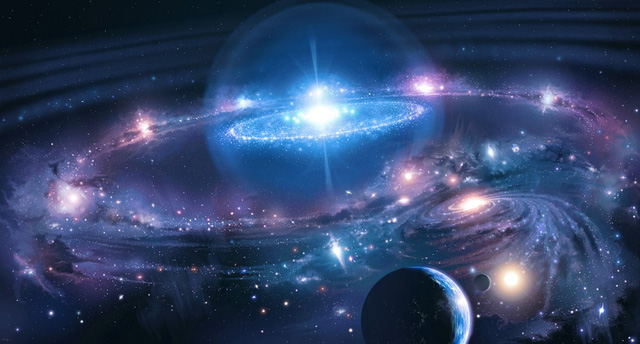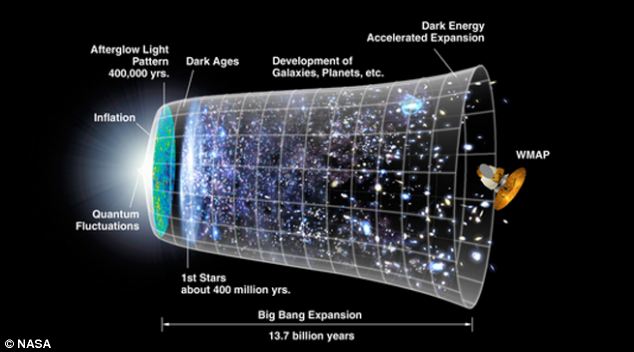The multiverse is a hypothesis that scientists have long put forward, but proving it to be true is not easy.
The existence of parallel universes seems a more familiar concept in science fiction works than in real life, but the idea of a “multiverse” has long been considered a possibility, although it is still a controversial topic among many. academics. The overriding question now is to find any evidence, anything that could prove that other universes exist.
Remember that the concept of a multiverse is not a hypothesis, in fact it is the result of our current understanding of theoretical physics. Between these two concepts is a rather distant distance. This idea did not suddenly come out of nowhere; on the contrary, it has resulted in modern theories such as string theory and quantum physics.
Do we live in a “multiverse”?
Multiverse analysis
You may have heard of Schrodinger’s cat experiment, an experiment with a cat locked in a metal box, as well as the following devices (which the cat can’t touch): a Geiger counter and a sample of radioactive material are so small that in an hour there is only a 50% chance that it will emit a radioactive beam. If radiation is emitted, the Geiger counter will pick up the signal and drop a hammer to smash the hydrocyanic acid poison in the tin box and the cat will die. If no radiation is emitted within an hour, the cat will still be alive. The wave function of the system will be a superposition of the two states of living and dead cat and the two states of superposition have the same amplitude.
Schrödinger’s cat experiment showed that two states are both possible, from which a multiverse hypothesis is in place.
The state of the cat, described in the Copenhagen interpretation of quantum mechanics, is a superposition of life and death, until someone opens the case to see it. But intuitively, in the macro world, the cat can only be in one of two basic states, either alive or dead.
However, according to the multiverse theory, all events are a fork. The life and death states of cats are based on two branches of the universe, both real, but not interacting with each other. These two states, life or death, we can only observe one state. We can all agree that all of the above possibilities are real and exist in another universe of the multiverse.
String theory
String theory is the most promising theory in the unification of gravity and quantum mechanics. This is extremely difficult, as gravity is difficult to describe on microscopic scales such as atomic and subatomic particles – key elements of quantum science.
But with string theory, the theory that all particles are made up of one-dimensional chains, she is able to describe all natural forces, including gravity, electromagnetism, and nuclear force.
10 dimensions of space? The limits of man have not yet been able to fully explore these mysteries of the universe.
However, to be able to mathematically power chemistry string theory, we need at least 10 dimensions of space while we only have four: length, width, depth and time. If this theory is correct, the remaining dimensions of space are the questions to be answered.
In order to be able to use this theory to explain immediate physical phenomena, these spatial dimensions would have been “squeezed” by bending in different ways, so that they become too small for ordinary people. Maybe at some point in this four-dimensional space, there are still six other dimensions of space that we haven’t yet realized?
However, the question to ask is: where are we among the many possibilities of this multiverse? String theory does not provide any predictive mechanism, so we cannot test it. However, the idea of the formation of the universe will most likely provide a possible answer.
The first model of the universe
At the beginning of the universe, before the Big Bang, the universe went through a period of gradual expansion. This expansion was initially given primarily to explain the uniformity of temperature in the universe that we observe.
However, this theory also predicted a range of thermal fluctuations around this point of equilibrium, and this prediction was later verified by observations from many spacecraft such as the Cosmic Background Explorer, Wilkison Microwave Anisotropy, Probe or PLANCK.
The Big Bang that occurred 13.7 billion years ago formed the universe today.
The details of this theory are still a hotly debated topic, however, the expansion of the universe is relatively widely accepted. As a result, somewhere in this universe will be parts that are still expanding.
However, due to the quantum vibrations of space-time, some parts of the universe will never actually reach the final state of expansion. This means that the universe, according to our present understanding, will be in a permanent state of expansion. So some parts will become other universes, and this is the mechanism for creating countless different universes that exist in parallel and independent ways.
By combining this scenario with string theory, it is possible that each of the universes has a different type of compression for the other six dimensions of space, and thus, they will have the laws of physics.
Hypothesis tests
The multiverse model of string theory and cosmic expansion coexist in the same physical space, they can overlap or collide. Obviously, their collision is inevitable, and it will produce the astronomical clues that we are trying to find.
Is it possible that many Earths also exist parallel to us?
What exactly do these signs look like? Much depends on the texture of the cosmic patterns, from hot or cold spots in the universe to giant vacuum cleaners in the galaxy. However, when collisions with other universes are necessary, any indication that disturbs the homogeneity of the universe is expected.
Scientists are still actively looking for these signs. Some look for direct markers in the universe, like residual luminescence after the Big Bang, others look for indirect signals, like gravitational radiation, which help prove existence in the theory of expansion, thus reinforcing theory to support the existence of the multiverse.
Can we prove the existence of other universes? This is a very difficult question to answer. But the presence of countless phenomena, clues to a great discovery – it is certainly a worthy mystery for the voyage of discovery.





